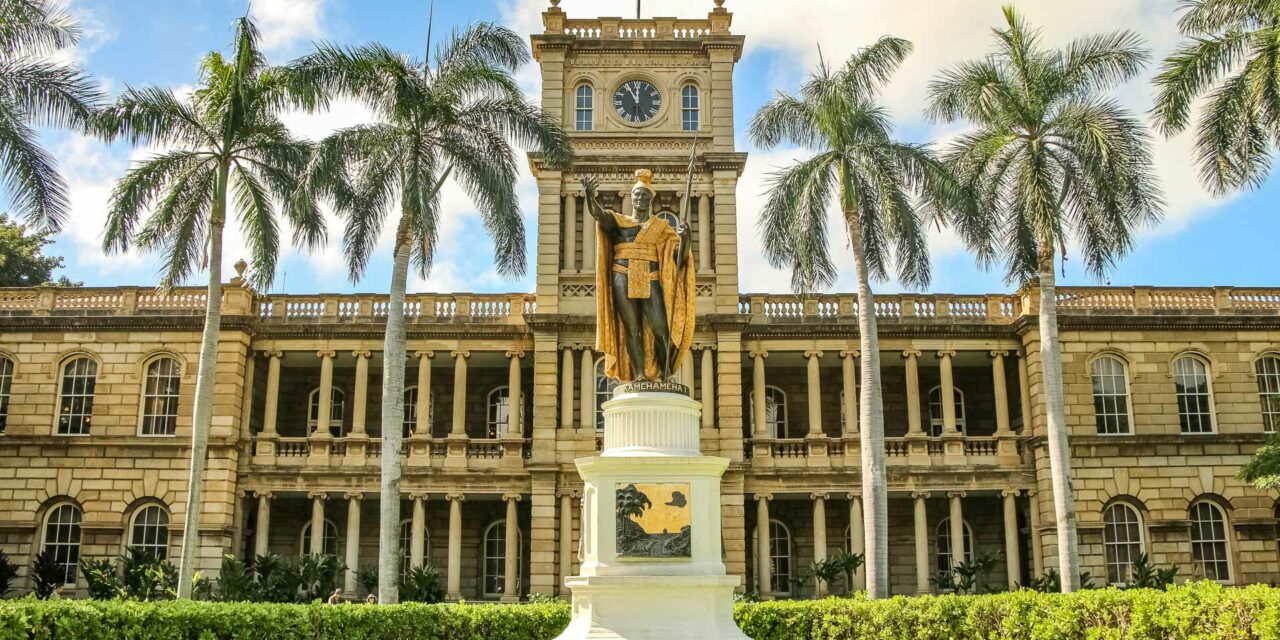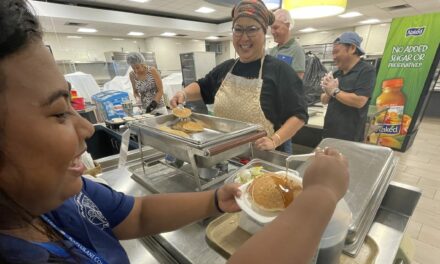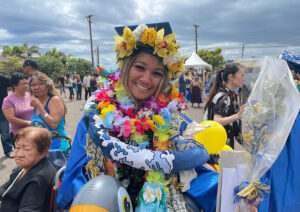Lā Kūʻokoʻa is a day of celebration for the Hawaiian community and a time to recognize the accomplishments of the Hawaiian Kingdom. (Photo by Cameron Enomoto)
By Cameron Enomoto | Staff Writer
Every country celebrates its independence day. Canada has its day on July 1 followed by the United States on July 4, but what about Hawaiʻi? Prior to the overthrow of the Hawaiian Kingdom in 1893 and the annexation in 1898, Hawaiʻi was an independent nation.
On November 28, 1843, the British and French governments formally recognized Hawaiʻi as an independent nation by signing the Anglo-Franco Proclamation. Hawaiʻi was the first non-European nation to be recognized as independent and was welcomed into the Family of Nations. Today, Lā Kūʻokoʻa is recognized as Hawaiian Independence Day.
In recent years, there has been a surge in the celebration of Lā Kūʻokoʻa. This 21st-century phenomenon has prompted the Native Hawaiian community to relearn history and come together to celebrate the feats of their ancestors. Given the history and prominent events, like TMT on Mauna Kea and the fuel tanks at Red Hill, many people feel a need to protest.
“Save the protests for another day,” said Kealalōkahi Losch, a Native Hawaiian professor at KCC. “To me, November 28 is not the day to do that. We owe it to ourselves and to our country to celebrate. November 28 needs to be a day of celebration of the accomplishments of our ancestors. It is about saying, ʻThis is who we are, not just who we were.'”
At the time of Lā Kūʻokoʻa, colonialism was a common occurrence. Europeans were sending out their ships and creating overseas colonies, but Hawaiʻi remained untouched for 50 years. From Lā Kūʻokoʻa in 1843 to the overthrow of the Hawaiian kingdom in 1893, Hawaiʻi was being run autonomously by Hawaiians.
“If there were a United Nations at the time, Hawaiʻi would have a seat at the table,” said Donovan Preza, the Hawaiian Studies program coordinator at KCC. “This is a very rare occurrence because recognition was not being handed out to natives in 1843. It showed that Hawaiʻi had a different relationship with the European and American powers versus other places.”
The recognition Hawaiʻi received came from the signing of a proclamation. This is generally what other countries use to show recognition of another nation. According to Losch, one of the four pillars of being an independent nation is being recognized by other countries and this is accomplished by willingly entering into treaties. Countries will only sign treaties with other nations that they recognize as countries.
“Our ancestors had amazing foresight and utilized ingenuity so that we would become players on a global stage,” said Losch.”We understood what that meant and how important it was to be a part of the global community, not as someone’s colony or a vassal state but as an equal partner.”
Losch stated that Lā Kūʻokoʻa stems partly from Lā Hoʻihoʻi Ea, also known as Sovereignty Restoration Day. British Lord George Paulet seized the kingdom without authority for a brief period. On July 31, 1843, independence was restored by British Admiral Richard Thomas who was sent by the British Crown to rectify the situation. This ordeal prompted Kamehameha III to send his trusted friend, Timoteo Haʻalilio, to secure recognition of independence diplomatically. On the return voyage to Hawaiʻi, Haʻalilio passed away. Though his efforts were successful and the independence of Hawaiʻi was celebrated for the next 5 decades.
Losch encourages people to fly the Hawaiian flag proudly and remember those who had the vision to see that the Hawaiian Kingdom could survive as an independent country in the world.
“We led the way in ideas around neutrality, utilize innovation and technology, and strengthened our international education,” said Losch. “These are things that KCC is known for, our ability to lead in those situations. I think we can take inspiration from the kingdom, and what better day to celebrate than Lā Kūʻokoʻa?”






